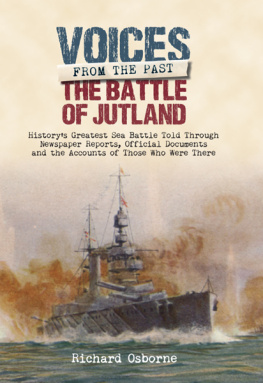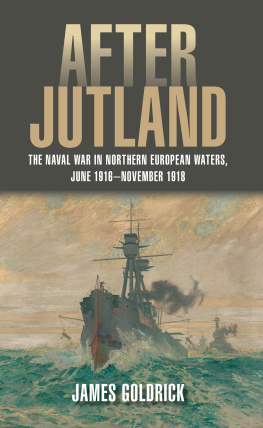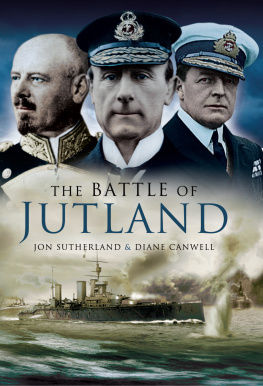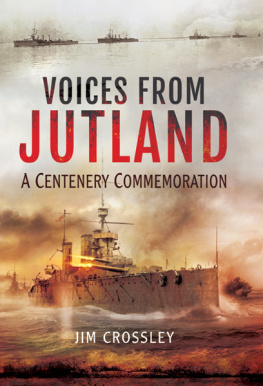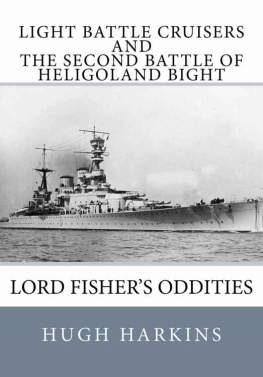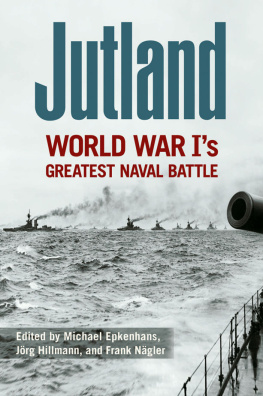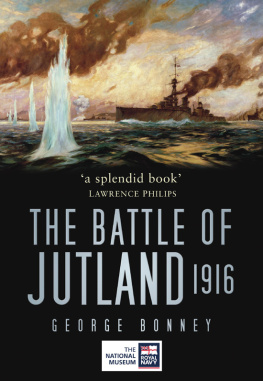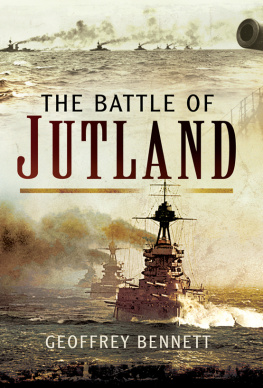
THE JUTLAND SCANDAL
The Truth about the First World Wars Greatest Sea Battle
Part I first published as The Truth About Jutland, by Rear Admiral J.E.T. Harper CB, MVO in 1927 by John Murray Ltd., London. Part II first published as The Jutland Scandal, by Admiral Sir Reginald Bacon KCB, KCVO, DSO in 1933 by Hutchinson & Co Ltd, London.
This combined edition published in 2015 by Frontline Books,
an imprint of Pen & Sword Books Ltd,
47 Church Street, Barnsley, S. Yorkshire, S70 2AS
Copyright Frontline Books, 2015
The right of Rear Admiral J.E.T. Harper CB, MVO, Admiral Sir Reginald Bacon KCB, KCVO, DSO and John Grehan to be identified as the authors of this work has been asserted by them in accordance with the Copyright, Designs and Patents Act 1988.
ISBN: 978-1-84832-937-9
PDF ISBN: 978-1-84832-940-9
EPUB ISBN: 978-1-84832-939-3
PRC ISBN: 978-1-84832-938-6
All rights reserved. No part of this publication may be reproduced, stored in or introduced into a retrieval system, or transmitted, in any form, or by any means (electronic, mechanical, photocopying, recording or otherwise) without the prior written permission of the publisher. Any person who does any unauthorized act in relation to this publication may be liable to criminal prosecution and civil claims for damages.
CIP data records for this title are available from the British Library
Printed and bound by CPI Group (UK) Ltd, Croydon, CR0 4YY
Typeset in 10/12 point Palatino
For more information on our books, please email: , write to us at the above address, or visit:
www.frontline-books.com
Contents
by Dr Richard Osborne |
by John Grehan |
Rear-Admiral J.E.T. Harper CB, MVO |
by J.E.T. Harper CB, MVO |
Admiral Sir Reginald Bacon KCB, KCVO, DSO |
List of Illustrations in Plate Section
Foreword
F or most British people brought up to believe in the invincibility of the Royal Navy, Jutland was probably the most disappointing battle fought during the Great War. The heaviest British losses occurred during the first phase of the battle when a force of six battlecruisers and four modern battleships, commanded by Vice Admiral Sir David Beatty, lost two battlecruisers and two destroyers while engaging a German squadron of five battlecruisers which lost just two destroyers. Once the main action was joined, the ratio of capital ships was seven to five in favour of the Royal Navy. The latter lost one battlecruiser, three old armoured cruisers and six destroyers while the Germans lost one battlecruiser, one pre-dreadnought battleship, four cruisers and three destroyers. Furthermore, the High Seas Fleet suffered far more damage than it inflicted in terms hits on surviving ships. Consequently, once Scheer encountered the full might of the Grand Fleet he had only one aim: to avoid further combat by getting back to base under the cover of darkness.
Thus, while it is clear that the Germans secured a tactical victory in the initial battlecruiser duel, it is also clear that they were defeated once the Jellicoes battleships joined the fray. It is also obvious that despite sinking more British ships and causing more fatalities, the Germans suffered a strategic defeat from which they never recovered. That being the case, why was the outcome of the battle so controversial and divisive?
In one respect, Jutland assisted the Royal Navy by shattering the overconfidence in materiel and training but the spectacle of seeing four large British warships explode must have had an effect on all who witnessed it. A Trafalgar on 31 May 1916 would have, in all probability, restored British naval supremacy for decades. Instead, the failure to annihilate the High Seas Fleet meant that the Royal Navy began to lose its moral ascendency after Jutland. Thus, with the passage of time it became less and less likely that those manning the fleets of, for example, Japan and the United States of America, would be overawed by the force of British naval tradition.
Controversy about Jutland was inevitable because poor visibility meant that no two British commanders had the same view of the battle. Consequently, there were never more than three or four German capital ships in sight from any part of Jellicoes battlefleet, despite the presence of over 250 ships in the area. Unfortunately, the failure to convert the tactically indecisive Jutland into a Trafalgar, despite the public expectation of such an outcome, had a corrosive effect on the Royal Navy leading to the growth of Jellicoe and Beatty factions within its officer corps.
However, the Jutland controversy was more than a personal dispute between Jellicoe and Beatty and their respective supporters. Instead, it should be viewed as part of the British response to the Great War and their subsequent feelings of failure, futility and revulsion at the whole bloody business.
Dr. Richard Osborne
Nailsea, July 2015
Introduction
F or more than 100 years Britains position as the worlds leading naval power was never seriously challenged. Yet, between the Battle of Trafalgar and the start of the First World War, almost every aspect of naval warfare had changed. Over the course of the intervening century, iron and then steel had replaced wood, and the standard 32-pounder cannon of Nelsons day that was designed for close range fighting had been superseded by the 15-inch breech-loading gun that fired a shell weighing 1,938lbs a distance of more than nineteen miles. Possibly the most significant change, however, was from sail to steam. No longer was the movement of ships dictated by the vagaries of the wind.
All of these changes meant that much of the Royal Navys sailing and gunnery expertise, passed down from generation to generation, had been lost. Britain, though, had invested heavily in its navy, ensuring that in terms of both technology and scale, it remained far in advance of any other country. The new and energetic state of Germany, nevertheless, sought to rival Britain and an enormously expensive arms race between the two nations began towards the end of the nineteenth century, backed by wide-spread public support. This reached its peak with the introduction of the Dreadnought-class of battleships which were far superior to any that had preceded it, so superior in fact that all earlier classes of battleships were immediately rendered obsolescent. It seemed that whoever had the most Dreadnoughts, not the most warships, would win the next battle. So, once again, the advantages that the Royal Navy had over its rivals was in danger of being lost. Britain might well have by far the largest and most powerful navy, but if Germany could build more Dreadnoughts it might well win a war at sea.
When war broke out in the summer of 1914 Britain still retained a numerical advantage over Germany, having built twenty-nine Dreadnoughts to Germanys seventeen, but the Battle of Tsushima, fought between Japan and Russia in 1905, indicated that having more battleships did not necessarily ensure victory.
In that battle the Russians had twice as many battleships as the Japanese, but the latter had an enormous advantage in the number of cruisers and destroyers. The Russian fleet was all but destroyed and the remnants compelled to surrender at sea. This was the only large-scale engagement with modern vessels prior to the First World War and it indicated that there were other factors to consider beyond having the most ships with the biggest guns. No-one knew, therefore, how the Royal Navy would fare in a major fleet action with the latest warships.
So, when after almost two years of cat-and-mouse antics in the North Sea the British Grand Fleet and the
Next page


